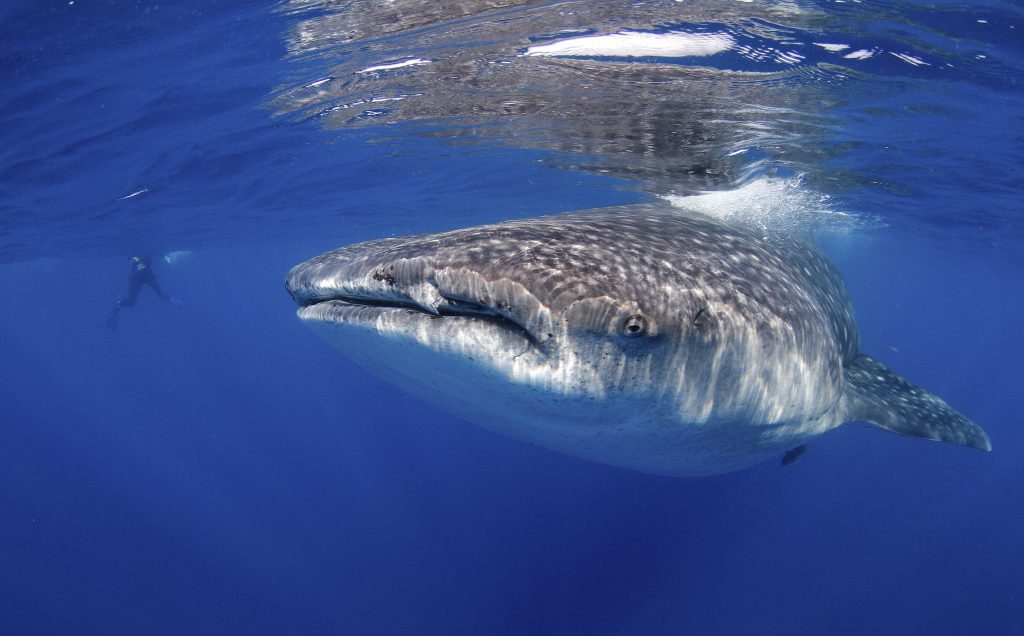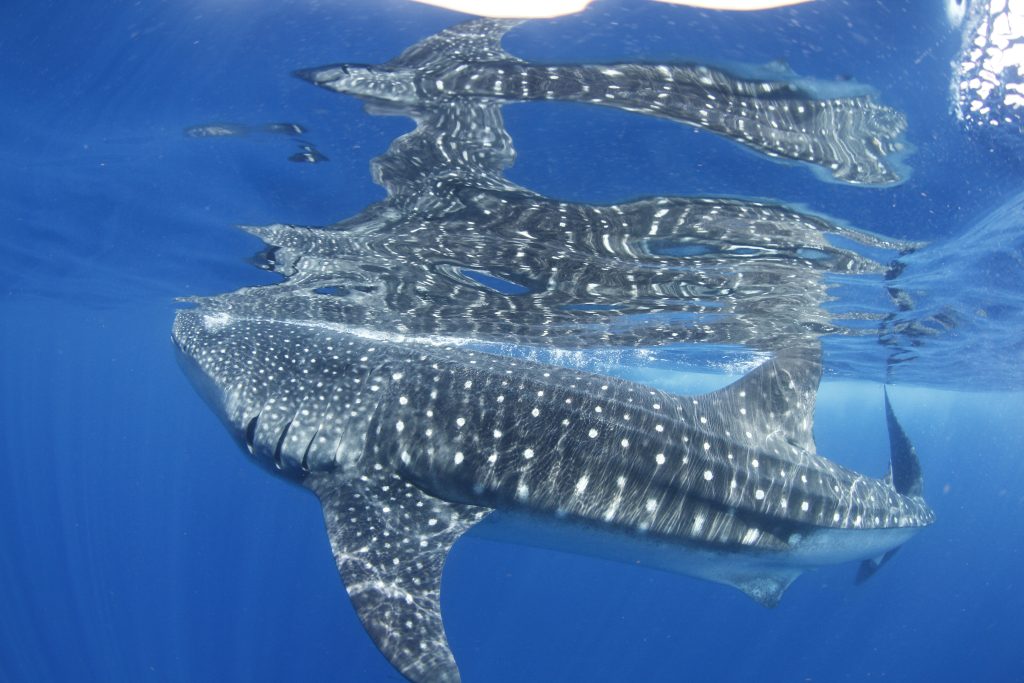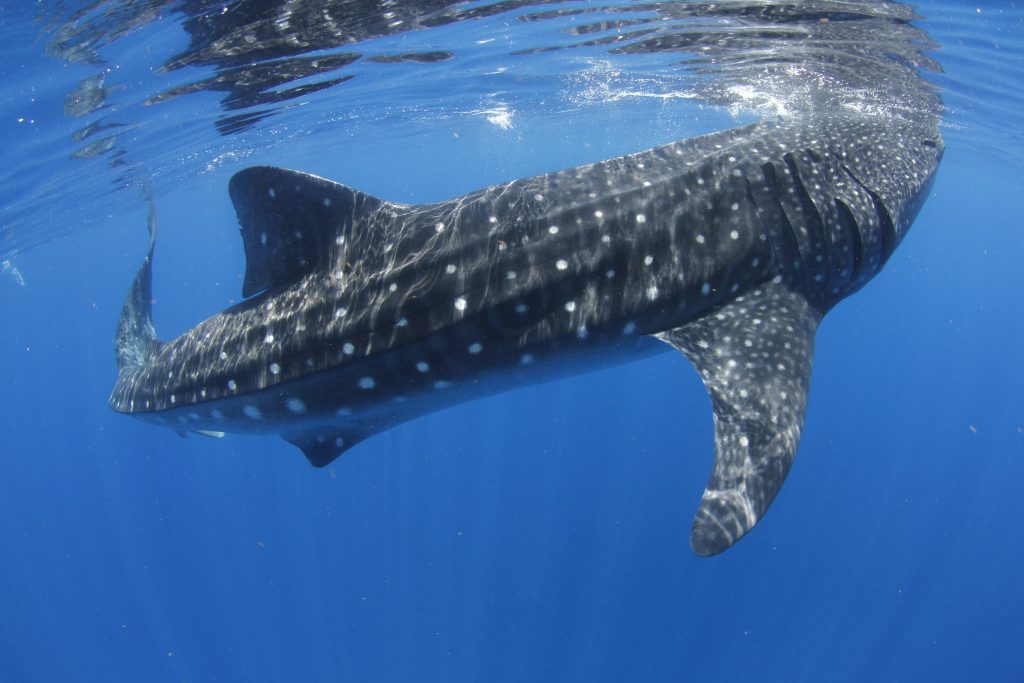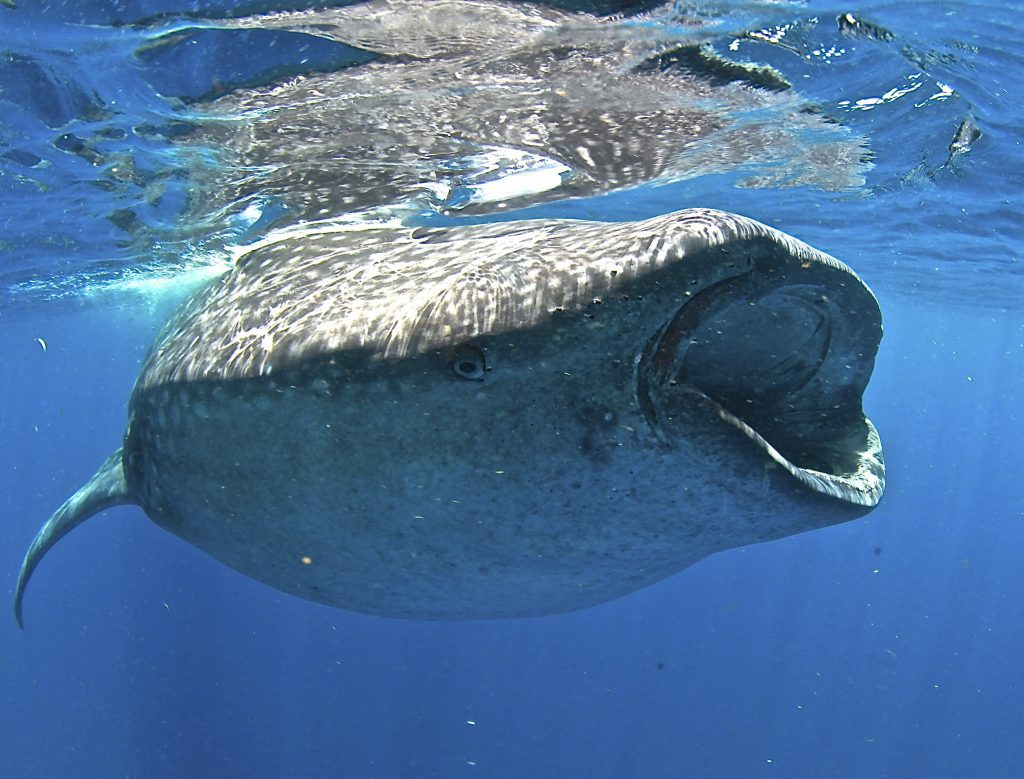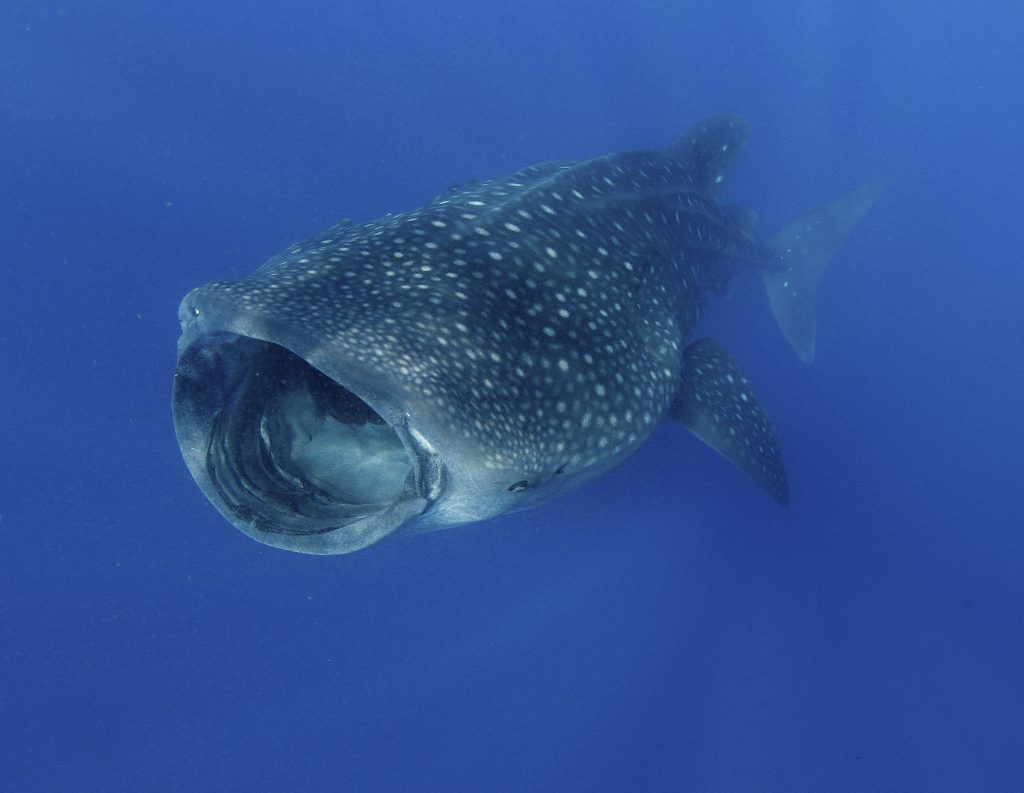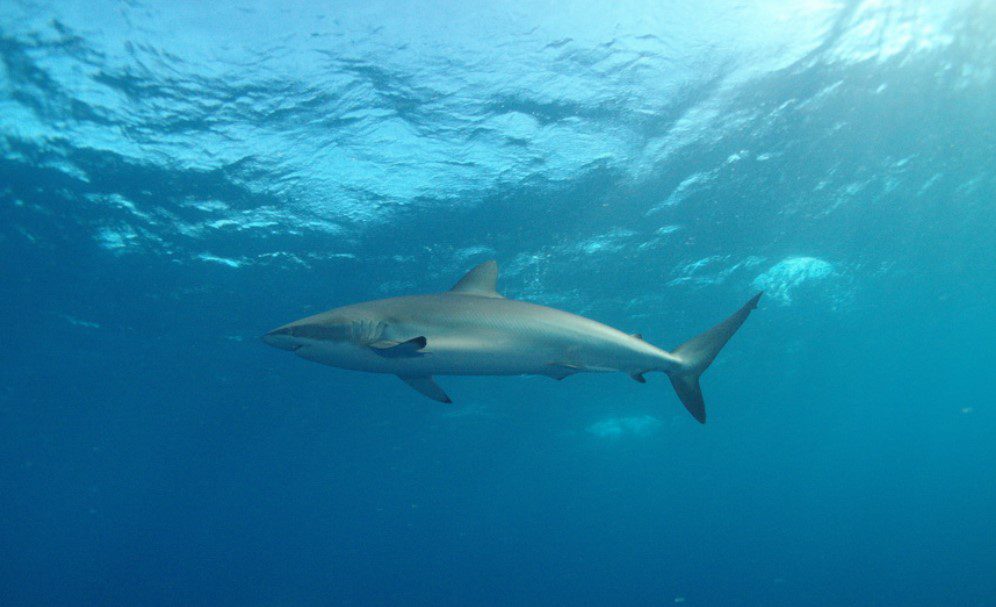Among the most iconic of sharks, the whale shark is the largest fish that exists today, with the biggest confirmed whale shark measuring 18.8 meters (62 feet) long. Whale sharks are the only member of the family Rhincodontidae, and are filter feeders that undertake seasonal migrations to areas of high concentrations of zooplankton, such as fish and invertebrate spawning events. While the sharks often swim mouth agape through dense plankton to capture food, some will hang vertically in the water column with their mouths open to create a vacuum. Despite their large size, most of the individuals seen at many of the well-known aggregation sites for the species are immature males. One of the biggest mysteries is where the pregnant females give birth, though there is some evidence that the Philippines may host a nursery ground. Because of their importance to local tourism economies, whale sharks are fully protected in Mexico, Belize, and Honduras.
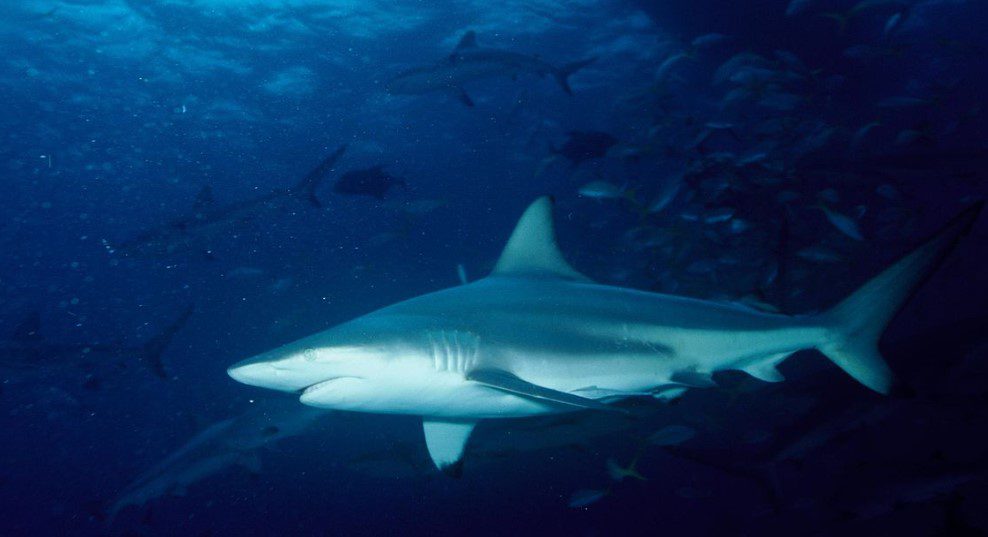
Blacktip shark
The blacktip shark is a sturdy, gray, medium-sized shark characterized by the black markings on the tips of its fins and a distinct white ‘z’

